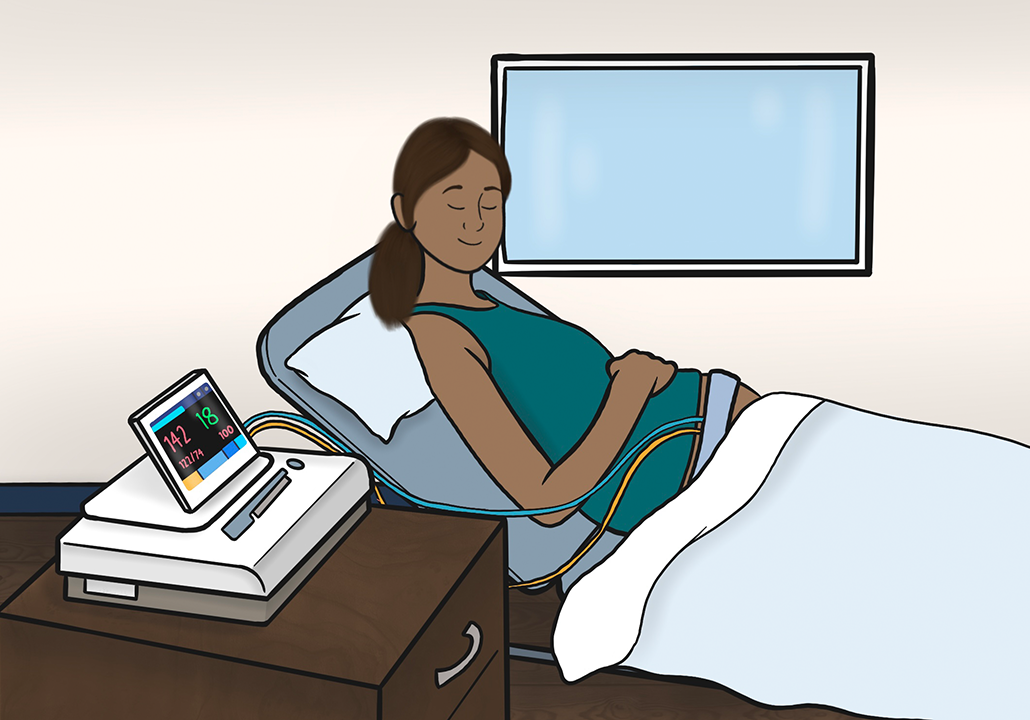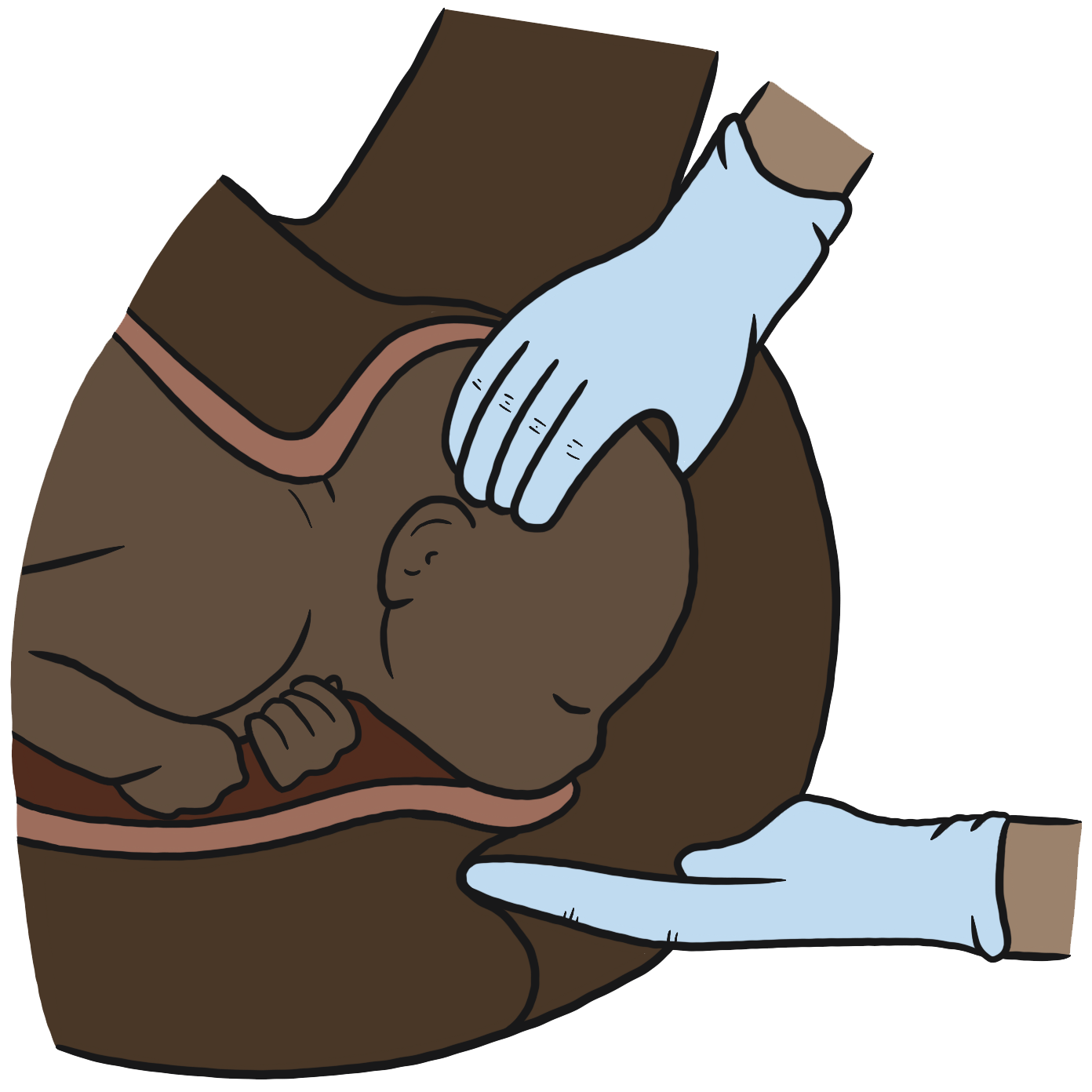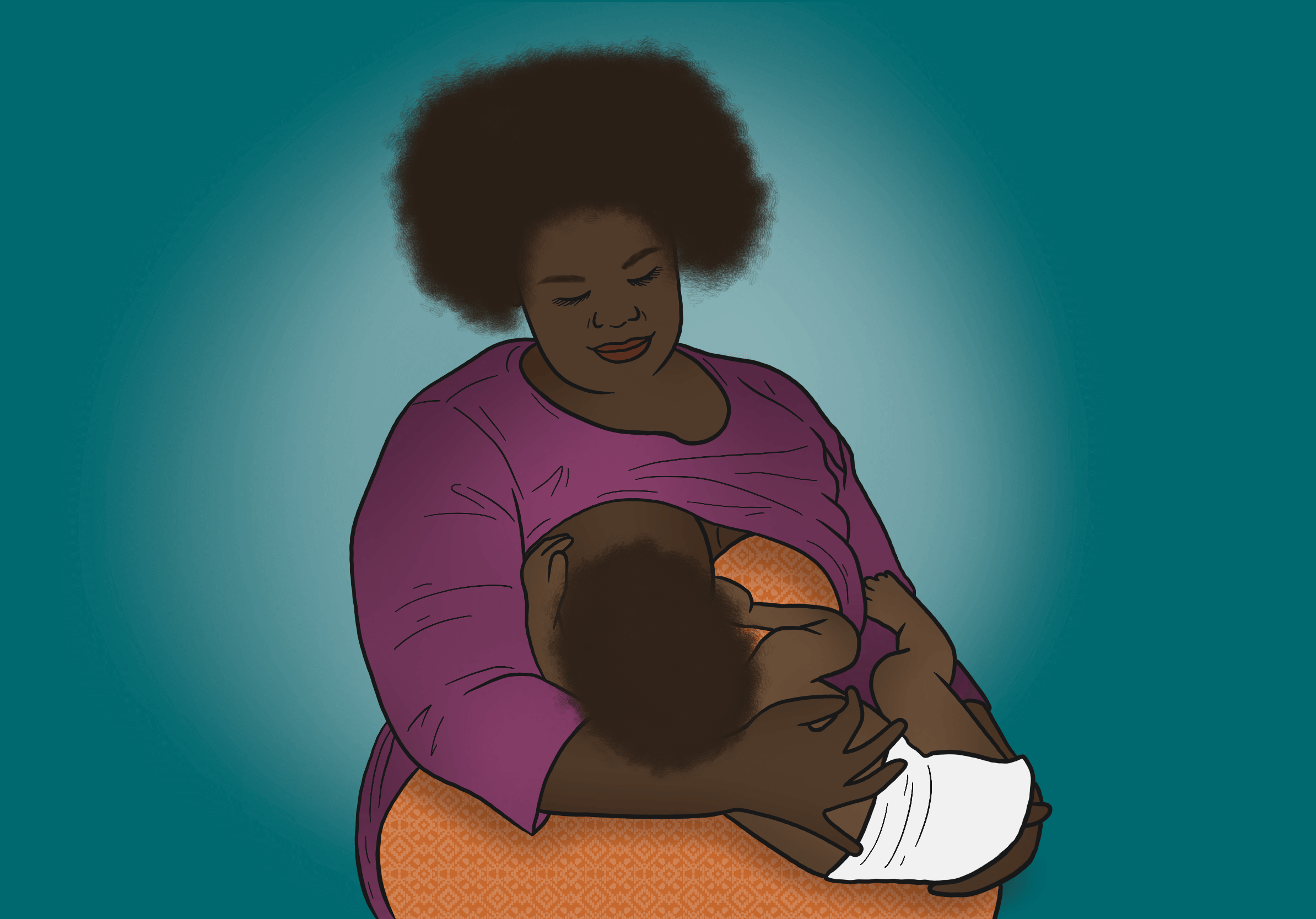Nausea and vomiting are both common early pregnancy signs for many people. It’s thought that up to 94% of women can experience nausea and vomiting in pregnancy to some degree.
The pesky double act is generally accepted as one of those unavoidable annoyances of early pregnancy – annoying, but generally expected, and overall, a welcome experience and sign that things are progressing well in the early stages.
Typically, nausea and vomiting symptoms come at a time where some may be trying to hide their newly discovered secret from family, friends, or colleagues until they are a little further along – maybe until they’ve adjusted to the idea of becoming a parent – perhaps for the first time, or until they have their first pregnancy ultrasound safely under their belt. But for a small percentage of women, it will be near impossible to hide the severity of their symptoms.
A lesser-known condition, called Hyperemesis Gravidarum [‘hyper’, meaning excessive, ‘emesis’, meaning vomiting, ‘gravidarum’, meaning pregnancy], also known as HG, will be experienced in around 1-3% of those with pregnancy related nausea and vomiting.
Morning Sickness vs Hyperemesis – What’s the Difference?
Nausea and vomiting in pregnancy (NVP) are considered along a spectrum – meaning that those who experience it will experience it in varying degrees ranging from mild to severe.
So, let’s have a look at some of the differences:
Mild NVP
Mild NVP is often referred to as morning sickness, although this is now deemed an outdated term. For any of you who have experienced it, you’ll probably be aware that ‘morning sickness’ doesn’t always occur in the morning as its cheery name suggests. Sickness can occur at any time of the day (or night). This type of nausea and vomiting involves short or occasional bouts of sickness experienced mainly in the first trimester (the first 12 weeks). Often beginning around 6 weeks and peaking around 9 weeks of pregnancy. For most, the symptoms will ease in the second trimester (12-28 weeks) and can usually be managed successfully through diet and lifestyle changes, without too much disruption to day-to-day activities.
Moderate – Severe NVP
Moderate to severe NVP can often be mistaken as mild NVP, creating a barrier and challenge to accessing treatment for those who may benefit from it. Moderate to severe NVP is more persistent and results in more frequent episodes of nausea and vomiting. Again, symptoms can occur at any point throughout the day, but often persist beyond the first trimester, with some experiencing symptoms up to 20 weeks or beyond. Some people can also experience excessive saliva production, adding to their feelings of nausea or vomiting. Although diet and lifestyle changes may make symptoms more manageable, for some, treatment may be necessary. Those suffering with moderate or severe NVP, may require emotional and psychological support as quality of life may be impacted, it may be difficult to manage normal routines or activities, and some will experience weight loss.
Hyperemesis Gravidarum
Hyperemesis is not simply ‘bad morning sickness’. Hyperemesis is a debilitating condition, thought to affect approximately 30,000 people per year in the UK. It is defined as nausea and vomiting which begins in early pregnancy, not caused by any other condition, which causes a severe inability to eat and drink normally and has a severe effect on daily activities. Severe vomiting as experienced in HG can lead to dehydration, weight loss, malnutrition, and organ damage for the mother, as well as having significant adverse fetal effects too.
HG can begin very early in pregnancy – sometimes even before a positive pregnancy test! Symptoms tend to peak around 9-13 weeks and can improve around 16-24 weeks. But for around 1 in 5 people with HG, symptoms will persist throughout the entire pregnancy. Due to the individual being unable to keep down food or even fluids sometimes, they can become unwell very quickly. Weight loss and dehydration can be quick and severe and medical treatment and/or hospital admission is needed to reduce further complications.
The impact on an individual’s quality of life, normal activities and emotional and mental wellbeing will be significant and psychological support will be beneficial for those experiencing HG in their pregnancies.
Some people can experience ‘dry’ HG or NVP, which doesn’t involve actual vomiting, only nausea. However, symptoms can still be so severe that it impacts on an individual’s ability to eat and drink, resulting in dehydration and malnutrition in the same way.
New Advances in HG Research
Despite nausea and vomiting being the second most common reason for hospital admission in pregnancy (preterm labour being the first), until recently, conclusive information on the cause of HG has been missing.
It’s long been thought that the cause of HG was down to high levels of various pregnancy related hormones. Studies have previously focused on changes in hCG (human chorionic gonadotrophin), and steroid hormones such as cortisol, estrogen and progesterone due to their presence and rising levels in early pregnancy. However, new research has suggested there may be another player in the mix responsible for causing HG.
GDF15 (Growth and Differentiation Factor 15) is a protein made in low levels in all tissues outside of pregnancy, but one which is also produced by the fetus in pregnancy. GDF15 acts on the mother’s brain causing nausea, vomiting and taste aversion. Leading researchers believe that high levels of GDF15 in the maternal bloodstream are associated with pregnancy related sickness and HG. However, it’s been discovered in recent research, that women with high levels of GDF15 before pregnancy (such as those with Beta-Thalassemia which causes chronically high levels of GDF15), had minimal reactions to it during pregnancy, leading to low levels of sickness.
A combination of the level of GDF15 produced by the fetus, and maternal sensitivity to the hormone is thought to determine the severity of sickness experienced.
Some people with HG are known to have variation in the gene that codes for GDF15 which causes them to produce abnormal levels of the hormone and/or have an abnormal sensitivity to it in pregnancy.
Interestingly, it is thought that exposure to GDF15 outside of pregnancy, may be the key to reducing the severity of the condition. This breakthrough discovery is monumental in leading the way towards prevention of NVP and HG. Exposure to GDF15 prior to pregnancy may help to build maternal resilience and tolerance, reducing their sensitivity to the protein during pregnancy.
It’s hoped that one day a test can be created to identify those most at risk of developing severe NVP and HG.
“Preventing GDF15 from accessing its highly specific receptor in the mother’s brain will ultimately form the basis for an effective and safe way of treating this disorder”
~ Professor Stephen O’Rahilly, University of Cambridge

Barriers to Care and Treatment
There are many myths surrounding NVP and HG, which unfortunately results in too many women receiving inadequate treatment for the condition, leading to medical complications, psychological stress and trauma.
As described above, most people will experience some level of pregnancy related nausea and vomiting. Whilst this may be unpleasant, it is usually short-lived and resolves itself. However, for those who fall into the moderate to severe NVP category, and those with HG, treatment is often required to manage the symptoms – without which, HG can have adverse effects for both the mother and the baby, and her future family plans.
A myth that all sickness in pregnancy is normal and to be expected, prevents people accessing the support that they need, and leads to important symptoms being overlooked. A lack of understanding, compassion, and ignorance amongst healthcare professionals regarding the debilitating nature of HG leads to a number of people suffering unnecessarily.
Another common myth, which stems from outdated and poorly designed research, suggested that HG was a psychosomatic disorder. Meaning, that many believed HG was a result of a mental health factor such as stress or turmoil, or ‘all in the head’, or often labelled as ‘hysteria’. Thankfully, research has now dispelled this myth, but it does still exist today amongst some health care professionals. People who suffer from HG can experience secondary psychological effects due to the condition, but it is not the cause.
Misinformation and historical stigma regarding the use of antiemetics in pregnancy can also cause barriers to treatment. Previous papers suspected there was an associated increased chance of birth defects such as oral cleft with use of antiemetics in the first trimester, however it is now believed that the risks of untreated hyperemesis far outweigh the minimally increased chance of birth defects. In fact, the risks of malnutrition and not taking folic acid is also associated with increased chance of oral cleft.
Another challenge to accessing treatment for HG, are symptoms not being perceived as ‘bad enough’ or having to ‘prove’ how bad they are. The problem with this is that often the effects of the symptoms – such as dehydration, weight loss or disability, occur over time, by which point an individual can already be acutely unwell. It is known that early treatment can prevent or minimise the severity of the condition and adverse effects, and minimise the need for admission to hospital.
What’s the Impact?
The impact of this awful condition is potentially life threatening if not treated appropriately and can cause long term health issues for both the mother and her baby(ies). It’s important to recognise that there is no cure (yet) for hyperemesis, but treatment is about managing symptoms to minimise the impact.
According to research 82.8% reported that HG caused negative psychosocial changes including loss of job or earnings, fears regarding future pregnancies or anxiety and depression. The impact of HG is also likely to be underestimated, as the research figures rarely differentiate between NVP and HG. There is also a high proportion of people with HG who will terminate the pregnancy out of desperation from their debilitating symptoms.
How Bad Is It?
Unlike pregnancy related nausea and vomiting which can vary from pregnancy to pregnancy, if you have had HG before, research suggests there is an 89% chance you’ll get it again in a subsequent pregnancy. This can have a profound effect on an individual’s plans for future pregnancies. For those who do choose to undergo another pregnancy knowing the recurrence rate is so high, planning and preparation is key, particularly with other small children in the house.
Maternal Effects
- Dehydration
- Malnutrition
- Blood Clots
- UTI / Sepsis
- Pregnancy Loss – Including termination
- Still Birth
- Retinal Damage
- Weakness / Disability
- Rib Fractures
- Heart Damage
- Pre-eclampsia
- Chronic Fatigue
- Gastric Ulcers
- Oesophageal Reflux / Rupture
- Dental Damage
- Haemorrhage
- Pre Term Labour / Birth
Fetal /Infant Effects
- Preterm Birth Related Complications
- Growth Restrictions
- Placental Abruption
- Neurodevelopmental Disorders
- Sensory Processing Disorders
- Speech and Language Delays
- Social Development delays
- Reflux
- Autism Spectrum Disorder (ASD)
Psychological Effects
- Anxiety / Depression Guilt
- Suicidal Thoughts
- Trauma
- Mood Disorders
- Stress
- Fears of Death / Fears of Vomiting in Public
- Receiving Cruel Comments from Others
- Social Isolation / Loneliness
- Stigma
- Unable to Care for Yourself and Others
- Sense of Dying
- Feelings of Being Misunderstood
- Societal Pressures to have more than One Child
Long Term Effects
- Financial Strain / Loss of Job
- Relationship Stress
- Change in Family Plans
- Healthcare Costs (If outside of the NHS) Cost to the Healthcare System
- Wider Impact on Family and community
- Fear of Sex / Pregnancy
You can see from the extensive list of possible adverse effects, the importance of accessing treatment and preventative strategies and support to minimise further complications and trauma.
This condition is serious and should be treated as such. Malnutrition related to hyperemesis can be prevented if appropriate and adequate treatment is provided. Malnutrition can cause lifelong problems and can be prevented.
The principles of treatment involve:
- Antiemetics
- Rehydration through IV fluids
- Addressing malnutrition/nutrient deficiencies/electrolyte imbalances
- Managing expectations – managing the condition rather than curing it
When to Seek Help
If you’re not sure whether what you’re experiencing is ‘normal’ – here are some things to consider:
- Are your symptoms affecting your ability to eat and drink?
- Have you lost weight in your pregnancy, if so, how much?
- Are your symptoms making it hard to carry on normal everyday activities/function?
- Have you had to take time off work because of your symptoms?
If your quality of life is being affected by your symptoms – it’s probably time to speak to your midwife or GP. Many pregnant people feel they must suffer in silence because they believe their symptoms are just part of the normal pregnancy experience. However, seeking early treatment may help prevent or reduce the need for admission into hospital, and reduce further medical and pregnancy complications.
Managing symptoms in the community, rather than being admitted to hospital usually creates a better patient experience, however, it may not be appropriate for everyone. For some, admission to hospital for 2-3 days may be more beneficial to get symptoms properly under control, rather than having to return to an outpatient setting every few days/weeks.
If you are showing signs of dehydration, IV fluids and treatment will be required. Dehydration also increases the chance of developing a blood clot (deep vein thrombosis or DVT), therefore you may require preventative treatment to minimise the chances of that happening.
Signs of dehydration include:
- Increased thirst
- Feeling dizzy or lightheaded
- Fainting
- Fatigue/exhaustion
- Infrequent urination/dark and strong-smelling urine
There is no shame in seeking help – don’t be afraid to reach out for support if you need it.

The Way Forward
If someone you know is suffering from HG, here’s what NOT to say:
- “Oh, I had that, but I still went to work and had to just get on with life”
- “Just think positively”
- “Get some fresh air”
- “Have you tried ginger?”
- “Well at least you can get pregnant, you should be grateful for that”
- “Is it safe to be taking those medications? Is it safe for the baby?”
As health professionals we must recognise and appreciate the enormity of this condition and its devastating effects. We must raise awareness of hyperemesis to improve diagnosis and access to treatment for those who require it. We must apply a more holistic approach, educate others and be sensitive to those suffering with symptoms. We must believe and validate pregnant peoples’ experiences of HG and break down the stigmas and barriers which remain. We need timely access and adequate treatment, but we also need to understand the potential psychological effects of HG and offer practical support and resources. We must also respect individual choices.
Further Support
If you would like to know more about nausea and vomiting in pregnancy or hyperemesis gravidarum, or need further support, visit Pregnancy Sickness Support or HER Foundation.





